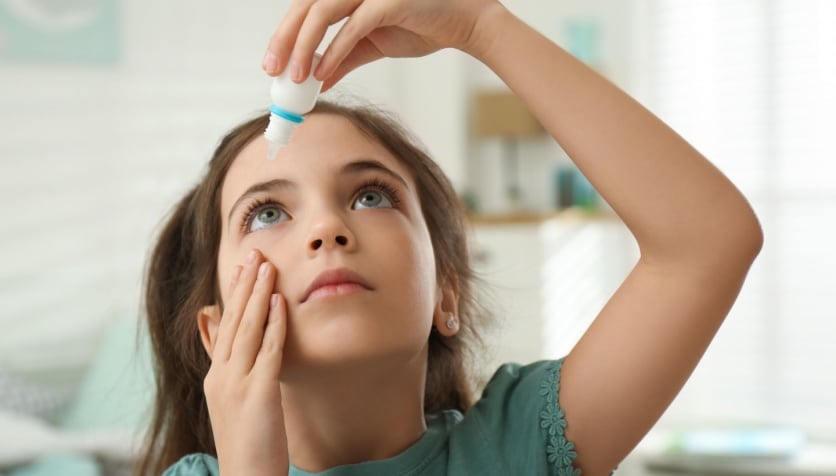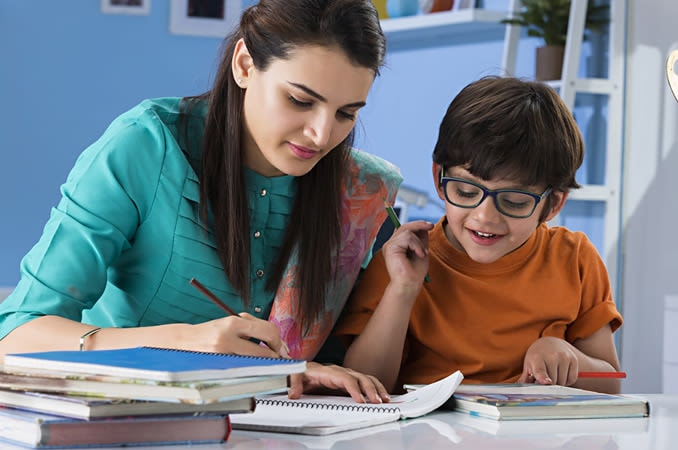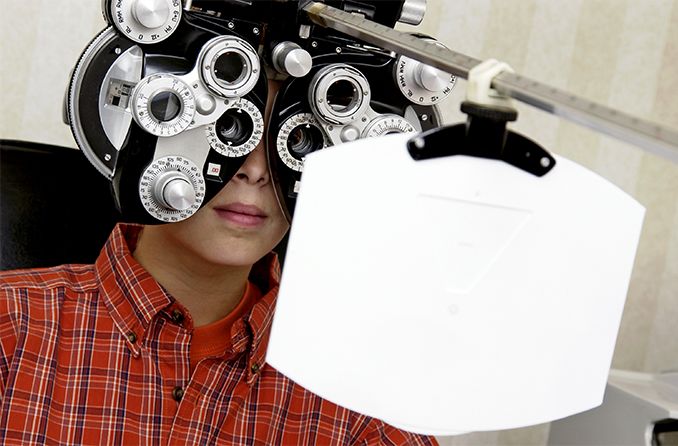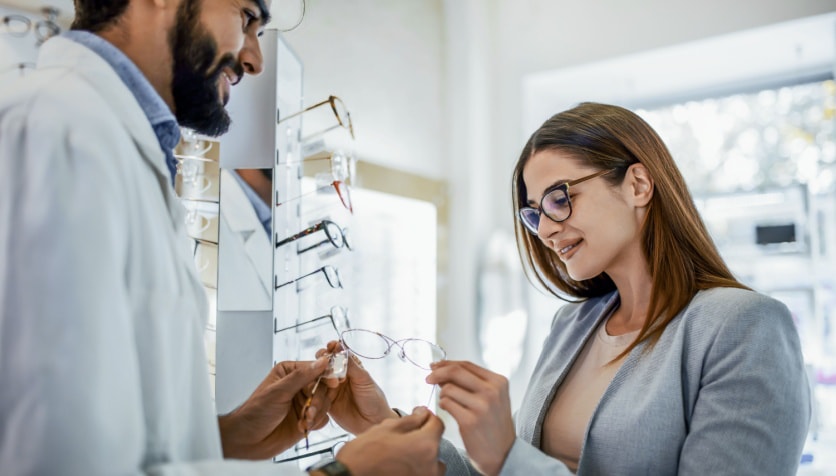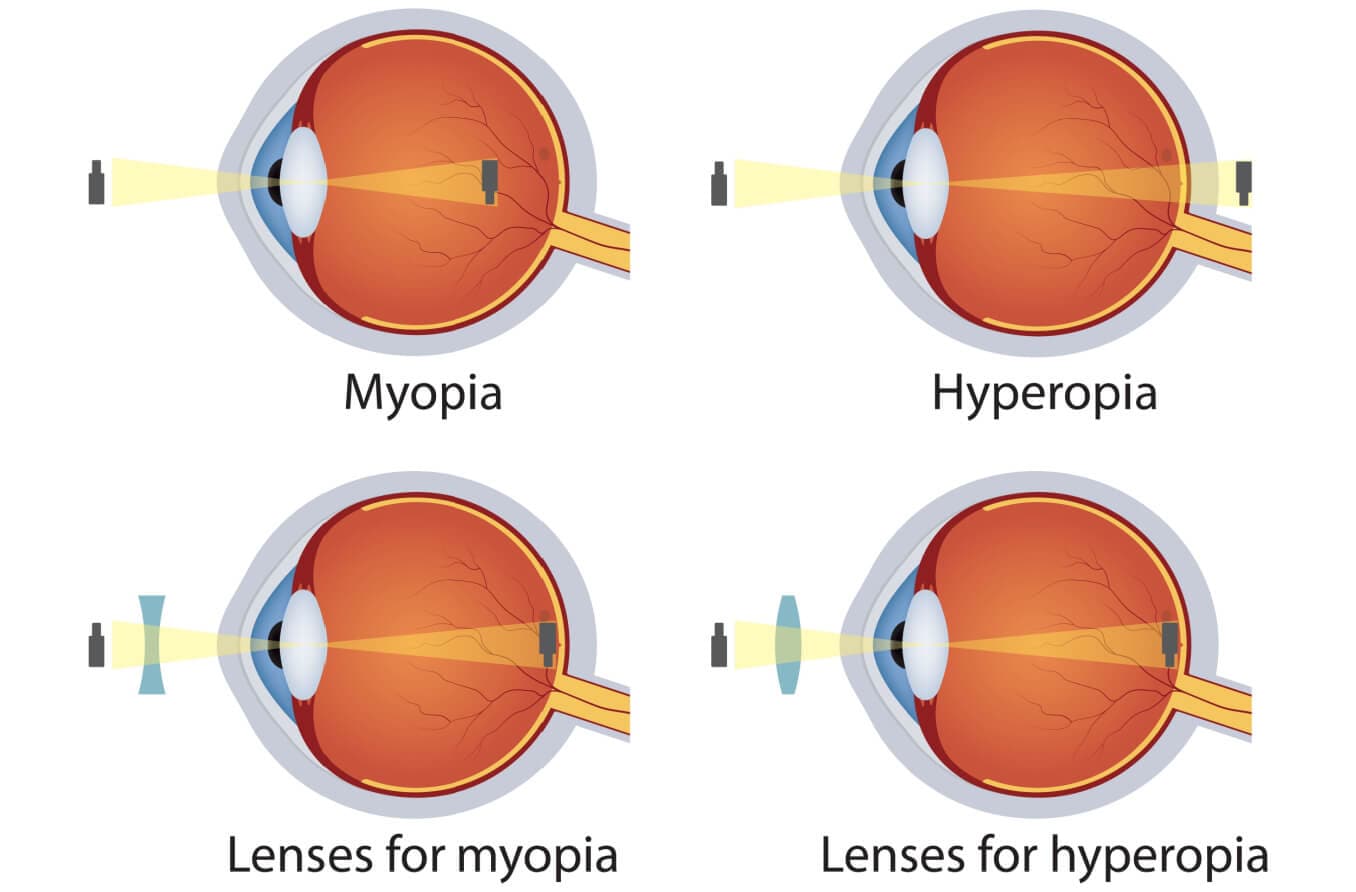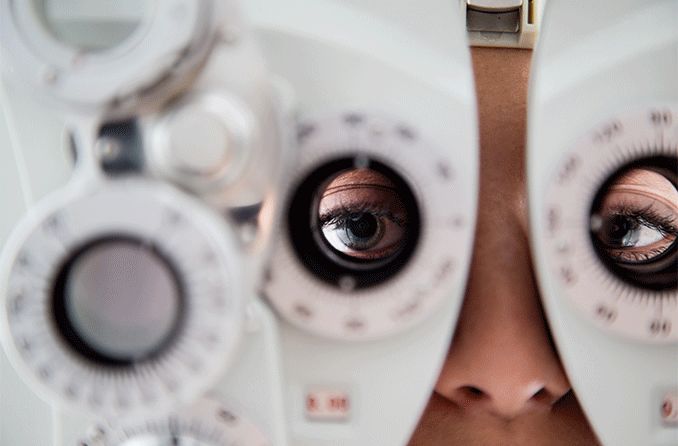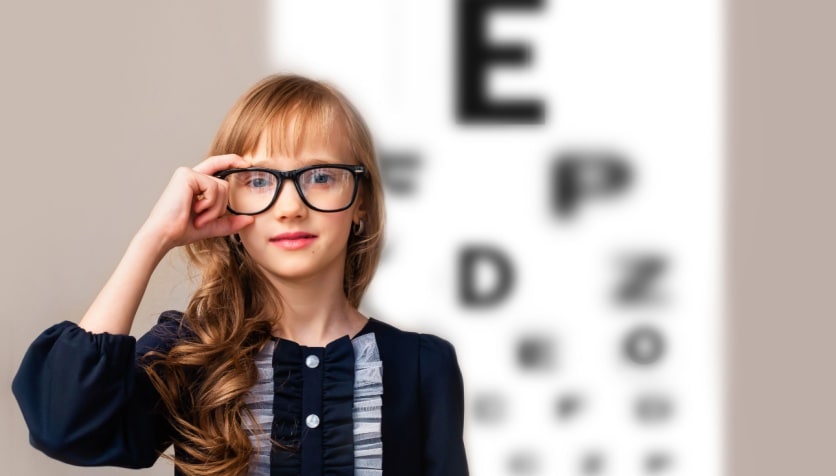What is myopia?
Myopia is another name for nearsightedness. A person is nearsighted when they can see clearly up close but their distance vision is blurry.
The type of myopia that most nearsighted children have is called axial myopia . It is due to the eyeball becoming longer than it should be. When the eyeball is too long, light rays entering the eye come to a focus in front of the retina (the light-sensitive tissue in the eye). This causes blur at distance.
The rate of childhood myopia is skyrocketing, particularly in school-aged children. Scientists expect that by the time today’s children are in their 40s and 50s, about half of the world’s population will be myopic.
The staggering number of future myopes has led scientists to investigate ways to slow down myopia progression. One of the strategies that scientists have found may be effective is the use of low-dose atropine drops in children.
How can eye drops improve vision in myopia?
Eye drops cannot immediately improve the vision of someone with myopia. But, low-dose atropine eye drops have been shown to improve vision long-term. Thus, they can slow myopia progression in children. These drops can also decrease the rate at which myopia progresses, reducing the risk of a vision-threatening condition called progressive myopia.
Progressive myopia in children is nearsightedness that requires a higher prescription at each check up. Individuals with progressive myopia often develop high myopia. And this can increase the risk of sight-threatening complications as they grow older. Strategies such as myopia control contact lenses or glasses are sometimes prescribed to slow down the progression of myopia.
While these are very good options, some children may not be comfortable wearing these specialty lenses. These children may find that it is easier to have atropine eye drops instilled daily before bedtime.
In addition, some eye doctors may prescribe a combination of myopia control glasses or contact lenses plus low-dose atropine eye drops. This can be an overall approach to myopia control.
Why is it important to slow down myopia progression?
Preventing the progression of myopia can improve the odds of good vision in the future. Millions of children are at risk of developing irreversible vision loss if they progress to high myopia.
A person whose myopia progresses above –6.00 D (high myopia) may be at risk for:
Retinal tears – a break in the retina
Retinal detachment – retina separates from the back of the eye
Glaucoma – a condition that can damage the optic nerve
Cataract – a clouding of the natural lens of the eye
Myopic macular degeneration
Posterior vitreous detachment – a separation of the vitreous gel from the retina
Optic neuropathy – damage to the optic nerve
What are atropine eye drops?
Atropine eye drops have been used in doctor’s offices for many years. They dilate the pupil and paralyze the accommodative system of the eye.
Eye doctors usually use 1% atropine eye drops in their offices for pupil dilation. For myopia control, children require a lower dose such as 0.01%, 0.025% or 0.05% concentration.
The exact mechanism by which atropine slows down myopia progression is not clear. Generally, the higher the concentration of atropine, the better its effect on myopia control. Studies are underway to evaluate the most effective dose and regimen.
Are atropine eye drops for myopia control safe for children?
The FDA has not approved atropine for myopia control, so this use is considered “off label.” The long-term effects of low-dosage atropine eye drops are unknown. But the research studies available to date suggest that it is safe.
What are the side effects of atropine eye drops?
The low dose of atropine eye drops used for myopia control should not affect the ability of the eyes to focus very much. Lower concentrations of atropine, such as those used in children for myopia control have been shown to affect pupil size and up-close vision only a small amount.
Side effects of atropine eye drops include:
Light sensitivity due to dilated pupils
Difficulty with near work, such as reading, because accommodation has been paralyzed
Stinging of the eyes when instilled
Ocular allergy or sensitivity to the formulation
How long does a regimen with atropine eye drops last?
A recent atropine study followed several hundred children over three years. Myopia progressed more rapidly in children who stopped atropine eye drops compared to those who continued into the third year.
Atropine drops will usually need to be tapered when being discontinued. It is important to discuss discontinuation of the drops with your doctor to determine the best strategy.
Can eye drops improve vision in other eye conditions?
Presbyopia
Recently, the FDA has approved eye drops for presbyopia with the use of pilocarpine, a drug that makes the pupil smaller. This allows a temporary improvement in vision by increasing range of vision.
Dry eye
Some eye drops help to stabilize and replenish the tears in people with dry eyes. These drops may improve vision for some patients by maintaining a stable tear film, which is important for good visual acuity.
Are eye drops for myopia control an option for my child?
A growing body of research has provided parents and eye doctors with strategies to slow the progression of myopia in children. These strategies include myopia control glasses and contact lenses as well as low-dose atropine eye drops in children.
A comprehensive eye exam is the first step to maintaining healthy eyes and clear vision.
Speak to your eye doctor about your child’s individual needs. Your doctor can evaluate your child to determine whether atropine eye drops are an appropriate myopia control option.
